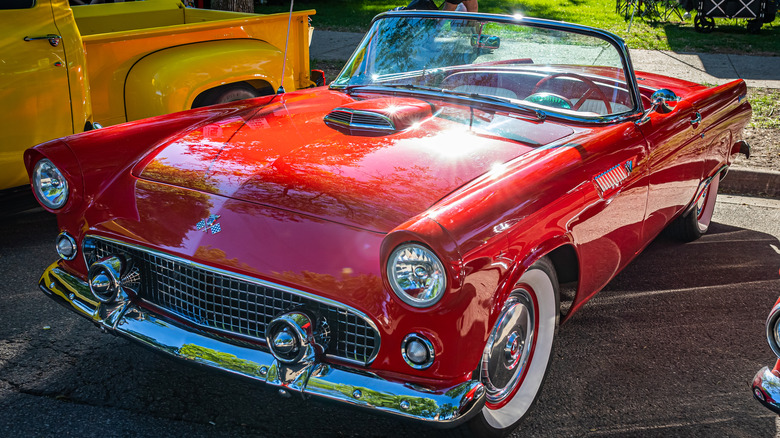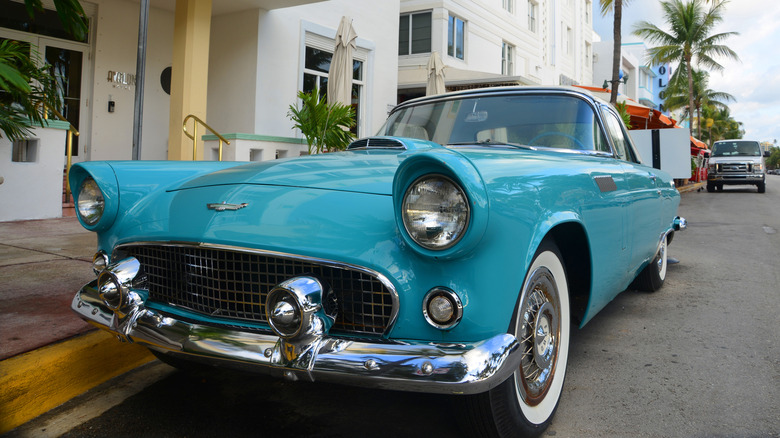How The 1950s Ford Thunderbirds Became A Quintessential Symbol Of American Cruising Culture
Ford is one of the most storied names in the automotive business, with a legacy stretching back to 1903 that includes industry icons like the Model T, Mustang, and F-150 pickup. During the heyday of American car design in the 1950s, the Thunderbird stood out as a shining example of the melding of space-age and classic design elements, and Ford built the bones of the Thunderbird to do the remarkable outer shell proper justice. The Thunderbird was crafted by Louis Crusoe and George Walker, who were inspired to create something special for Ford after seeing a Ferrari Barchetta at the 1952 Grand Palais car show in Paris. After two years of sketching and modeling, the gorgeous new model was finally ready for production, but it still needed a name.
More than 5,000 potential monikers had been suggested, including the forgettable options Savile, Runabout, Detroiter, and Beaver. A desperate Crusoe offered a $250 suit to anyone who could come up with a more appropriate name, and stylist Alden Giberson came up with a remarkable stroke of inspiration and perhaps the coolest badge ever put on a vehicle.
Ford unveiled its striking new model at the 1954 Detroit Auto Show, the industry's first such gathering after World War II. The first production Thunderbird was manufactured that September, and it went on sale as a 1955 model for between $2,695 and $4,000.
The Thunderbird was an instant hot seller
Despite the relatively steep price (a 1955 Chevy Bel Air convertible started at just $2,321), Ford sold 3,500 1955 Thunderbirds in the first 10 days they were available. In its first three years, the Thunderbird outsold the Chevy Corvette by a margin of more than 4.5 to one. In that span, Ford made steady changes to the Thunderbird, even morphing it from a two- to four-seater in 1958. Other updates included the addition of a rear window, power seats, and a radio that automatically adjusted its volume according to the car's speed. In the first year, only a 292 cubic inch V8 was available, but a 312 cubic inch engine was added as an option for the 1956 model year. The following year, Thunderbird buyers could also opt for a supercharged version of the 312 that produced 340 horsepower and a spine-jiggling 450 pound-feet of torque. Ford brought the T-Bird to NASCAR in 1959, and it won six races that year in what was then known as the Grand National series.
The Thunderbird has gone through 10 generational updates, with each one drifting further from the original. The 11th generation was an attempt to reimagine the styling of the original, but missed the mark this misfire led to the model being dropped in 2005.
First generation 1955 to 1957 models remain the most coveted to this day, with examples in prime condition routinely selling for more than $100,000.

